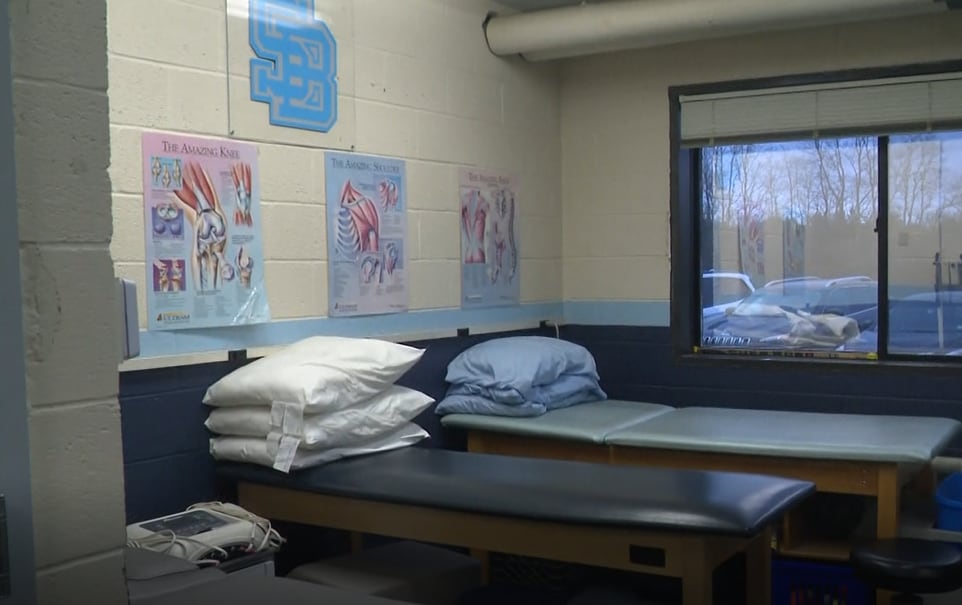
BURLINGTON, Vt. (WCAX) – Pending legislation would require every Vermont school district to have a response plan in the event of a cardiac emergency, including working with EMS providers, training staff on AED and CPR, and doing practice drills.
In South Burlington, that responsibility falls on the school’s athletic trainer – Sierra Villamaire.
Villamaire says there haven’t been cardiac emergencies within the district in at least a few years, but they have emergency plans in place and staff trained. However, she notes that not every school has a full-time athletic trainer on-site to coordinate procedures.
“It’s really hard if they’re not athletic trainers in the after school hours, during or for some high schools. Because I don’t know who would necessarily respond to those situations,” said Villemaire.
Rice freshman Alexis Menard-O’Neil is a three-sport athlete, diagnosed with Wolff-Parkinson-White Syndrome – a congenital heart defect.
“I’ll get like really dizzy while like running around and playing sports, which is really hard because I play a lot of sports. And then it’s like, my heart beats faster,” said Menard-O’Neil.
She says surgery has allowed her to continue competing, but she’s made it a goal to raise awareness of conditions like hers.
“I don’t want people to have to stop playing sports and doing what they love, because they have like something undetected or they don’t know what is wrong with them,” she said.
Students like Menard-O’Neil are exactly who a bill in the statehouse aims to assist in the case of a rare cardiac emergency.
Colchester district nursing coordinator Moriah McCullagh says they already have these practices in place.
“Whether it be you know, in an injury or some sort of traumatic event that’s happened, or bleeding emergencies, breathing emergencies, where we were prepared to respond to opiate-related emergencies, you know, a number of things. So we tried to think a little more broadly,” said McCullagh.
School officials we spoke with agreed that protecting the lives of students and adults alike is a priority, but staffing issues can cause challenges. The Association of Athletic Trainers says there are 225 licensed in the state, but only 17 trainers are working full-time in secondary schools.
Both school districts say there haven’t been any major cardiac emergencies in at least the past few years.
There’s also another bill in the house that considers how feasible it would be to have at least one full-time athletic trainer in the house.







